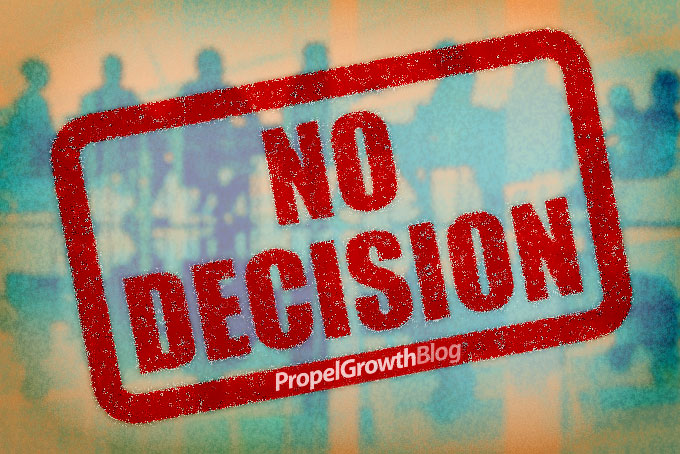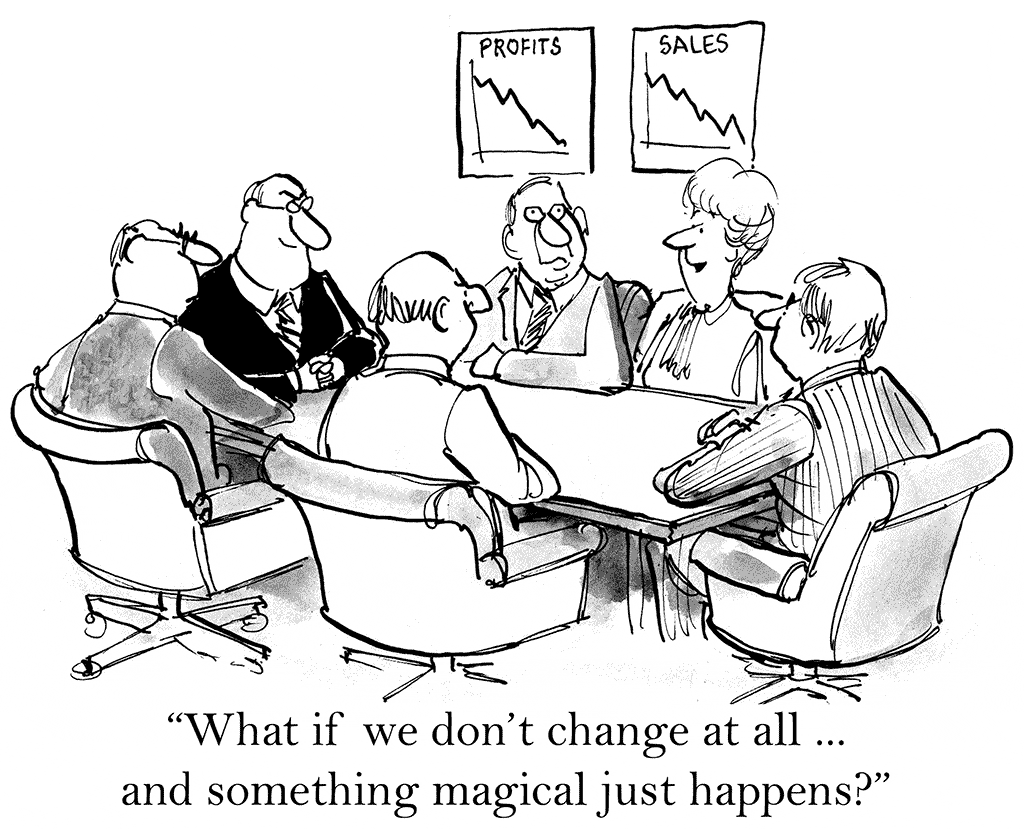
Many of our clients are experiencing longer and longer sales cycles, and the longer the sales cycle, the more financially painful losing becomes.
At the same time, the propensity for “No Decision” losses is increasing. Let’s talk about how these trends affect your sales process and what you can do about it.
Buying Technology is Getting Harder
For financial institutions, buying technology has gotten much more difficult since 2009. Buying committees are growing, decisions require more approvals than ever, and cost justification is more complex, especially for the sell-side. Frequently, deals are lost because the customer’s buying committee fails to make a decision. And this problem has been getting worse in the past 3 years.
Last year, CCGroupPR’s research study found that financial institution buying committees for large technology purchases are growing. Up to 52% of tech decisions at banks can involve 10 or more people.
Research by Corporate Executive Board (CEB) found that buying committees larger than 5 people have a 69% likelihood of failing to agree on any purchase. So that means that FinTech vendors are more likely to lose sales to “no decision” than to competitors.
“No Decision” Losses are Expensive
Sales lost to “NO DECISION” are generally lost very late in the sales process. This dramatically increases the company’s overall cost-of-sale, and can have a devastating effect on profitability.
Yet Sales and Marketing teams consistently focus more attention on positioning against competitors than on solving the no-decision problem.
If they could just reduce their “no decision” loss rate, they would not need to worry about the competition.
Why Buyers Fail to Decide
So, what makes a deal fall apart? There are lots of reasons. Here’s a laundry list.
- Fear of uncertainty
- Competing goals internally
- Organizational inertia
- Different world views (especially in global firms)
- Misunderstanding of varied needs
- Interpersonal or intra-group conflict or competition
- Political risk
- Power struggles
- Unwillingness to compromise
I’ll elaborate on the first three and how Marketing can help below. Also, check out this case study I did for a client on a deal lost to “no decision.” Find out the real reasons it didn’t close.
Fear of Uncertainty
Uncertainty is the most common deal killer. It’s also the one you have the most power to overcome. The organization might be uncertain that they can effectively implement the solution. They might feel they lack the necessary resources, training or time. Often, vendors exacerbate that problem by being vague about the implementation process. If the buying committee is not absolutely convinced that they can successfully make the changes needed to be successful with the proposed solution, they’re unlikely to close.
Uncertainty can also burn through a lot of sales resources as the vendor organization works to overcome the uncertainty. So losing to no-decision after doing all the work required to answer information requests from the buying committee is especially painful.
Marketers should monitor these situations closely, dig into the questions and find ways to create marketing content to help combat uncertainty. You should NOT be losing to “no decision” because of uncertainty, but many tech vendors do.

Competing Goals
Generally, buying processes are filled with drama as different factions compete for access to limited funds. All of them have pressing needs, and there is never enough time, money or people to throw at every problem. Internal politics plays a big role, and teams with more political clout often win.
I’ve seen situations where teams on different continents want to solve similar problems using different vendor solutions. They end up competing with each other to sell their preferred vendor internally. Meanwhile, if it tends to prefer internal build, their internal IT department becomes a third competitor. Management expects them to come to agreement on a solution. If they can’t reach consensus, nothing happens.
In some cases, one team might feel a given product addresses all their needs, while the opposing team feels it won’t meet specific requirements.
Marketers can help by collaborating closely with Sales and the prospective client’s internal advocates to try and learn all the objections that are surfacing. Usually, your sales team won’t get access to the objectors to address their concerns directly. So Marketers need to create content that will arm the prospective client’s internal advocates. They’re the ones who will need to do the selling, and they can’t do it unless you effectively arm them.
Organizational Inertia
Sometimes, organizations just can’t overcome their own inertia to move forward. They may not feel the pain intensely enough, they may be overwhelmed with current business demands, they may believe that the pain of change is worse than the pain they’re experiencing now, or they might just give up on trying to build enough consensus to gain approval. Sometimes, a key advocate gets so fed up that they leave the company. Regardless of the reason, the sales process gets very expensive as the vendor tries to overcome the inertia.
Marketing can help by collaborating closely with Sales and creating content that is specifically relevant to the pain of that particular client’s status quo. Then re-position the messaging in that content for each member of the buying committee and run an email campaign targeting that specific account. Account-based marketing strategies can be particularly effective in these situations.
How to Get Started
If you want to develop a strategy for reducing the “no decision” loss rate, start by working with your head of Sales to identify a couple deals that seem to have stagnated. Then collaborate with the head of sales and the account manager to dig into why it has stalled. If you can, meet together with the client’s advocate to try and uncover the internal objections and hang-ups. Then discuss what kinds of content might best facilitate getting the opportunity back on track. Start small, and grow gradually. Next week, I’ll go into more detail about the kinds of content that can help clear log jams at each stage in the cycle.
In the meantime, if you’ve got a big deal that is stuck and want to talk it over, give me a call. I’m happy to discuss approaches that have worked for other firms.
Explore This Topic Further
Loss Analysis Case Study
Improve Win Rates With Content Marketing
Does Your Marketing Hype or Help?
Is Your Late Stage Content Increasing Fear?






